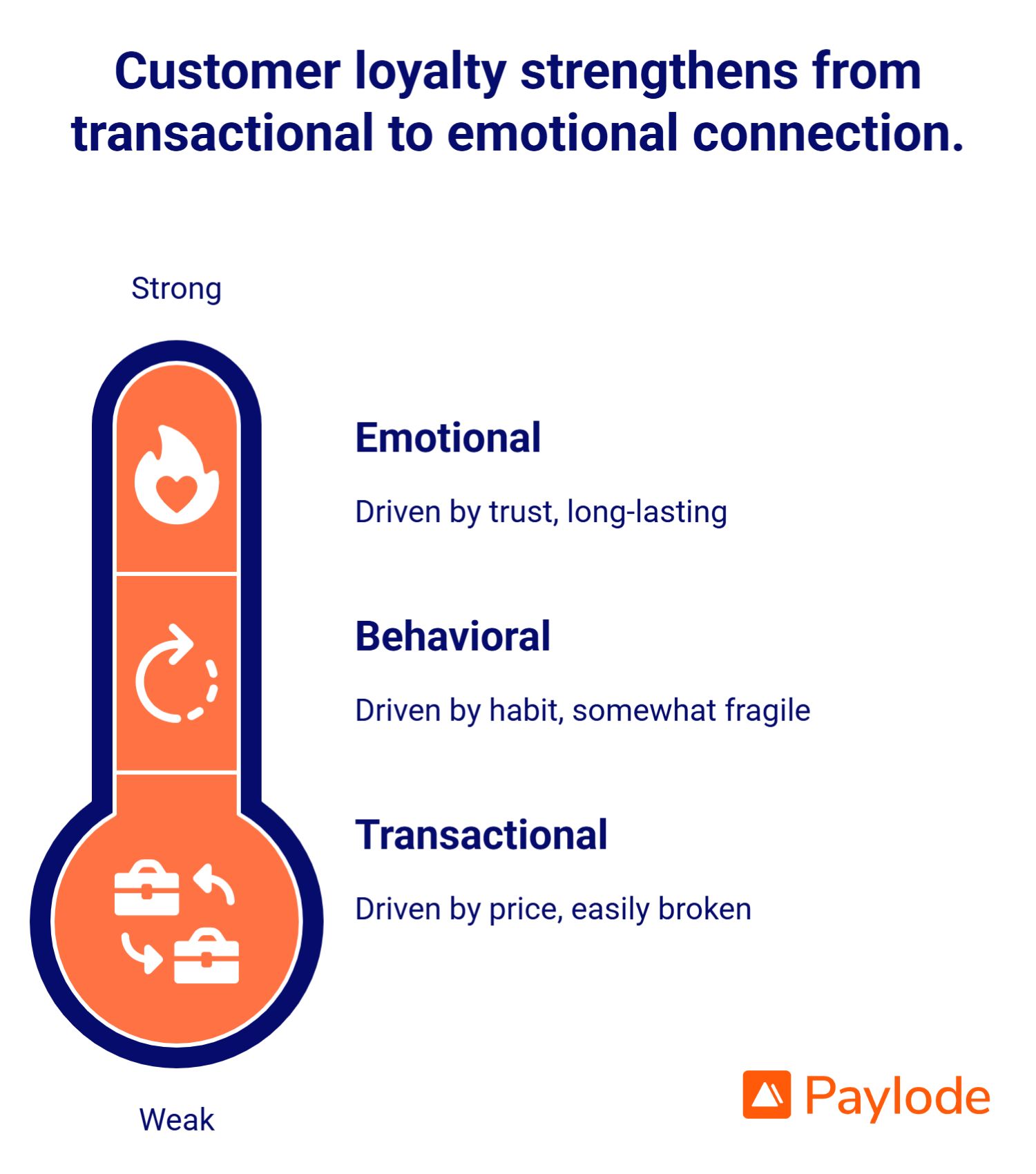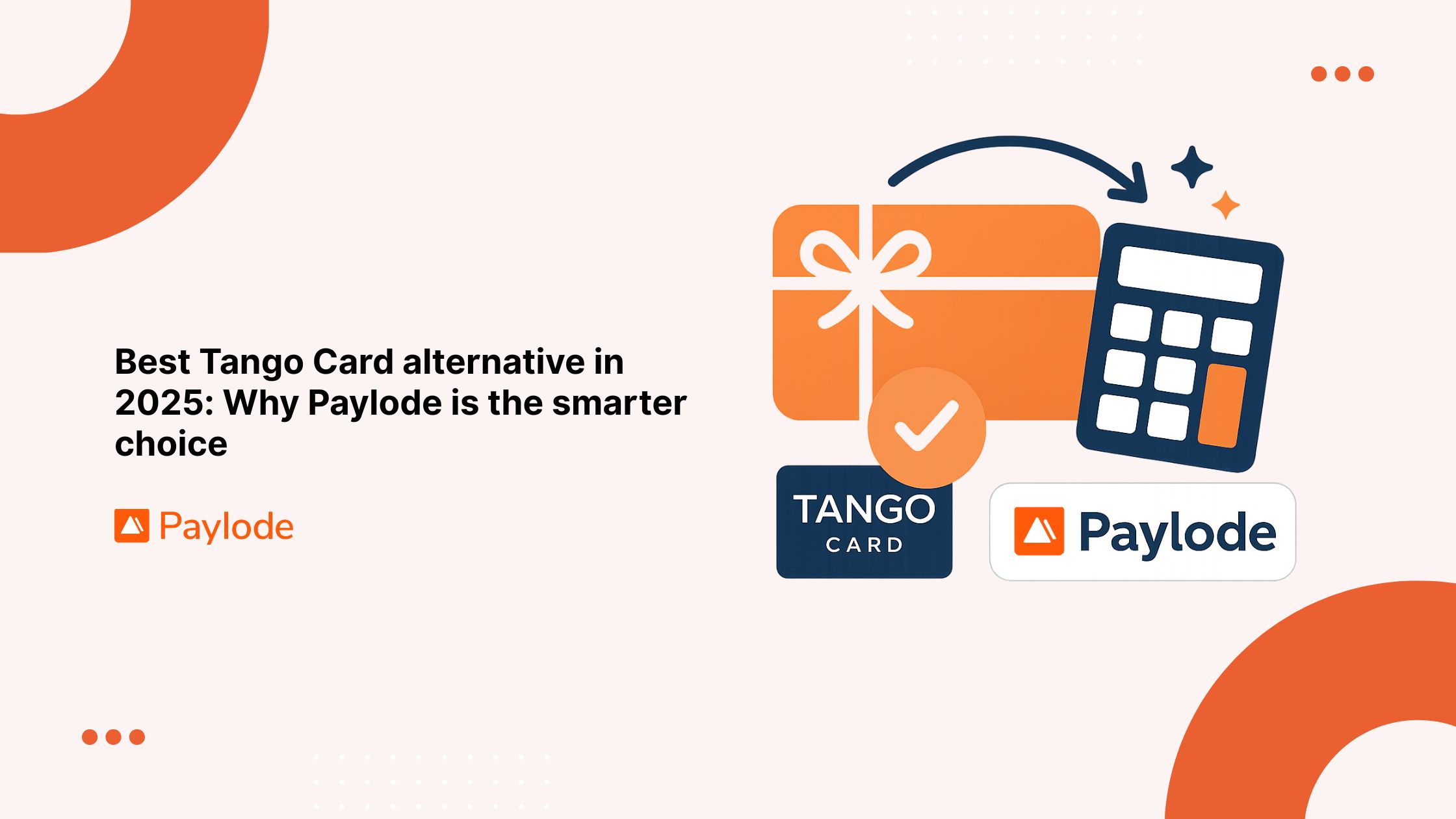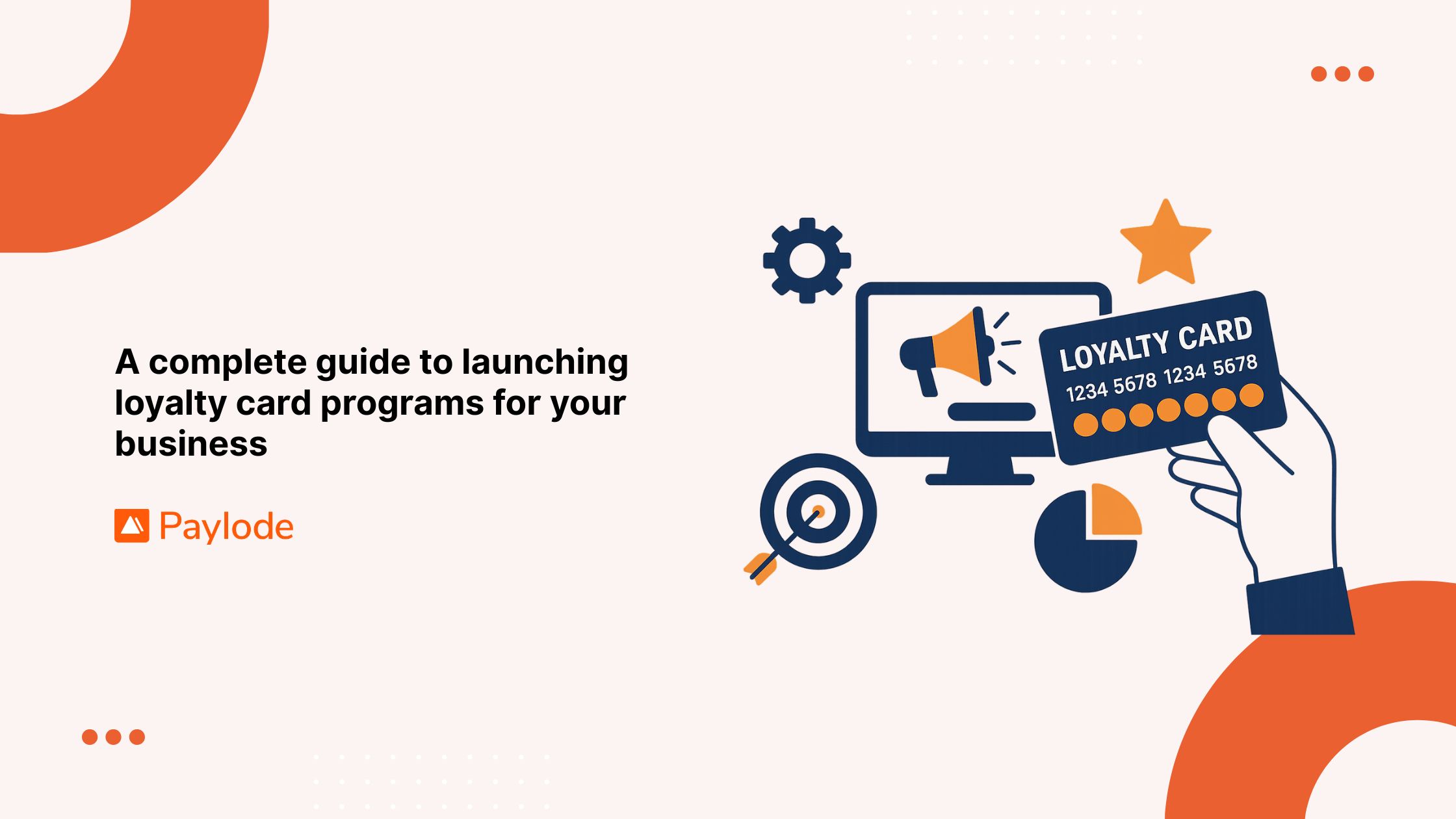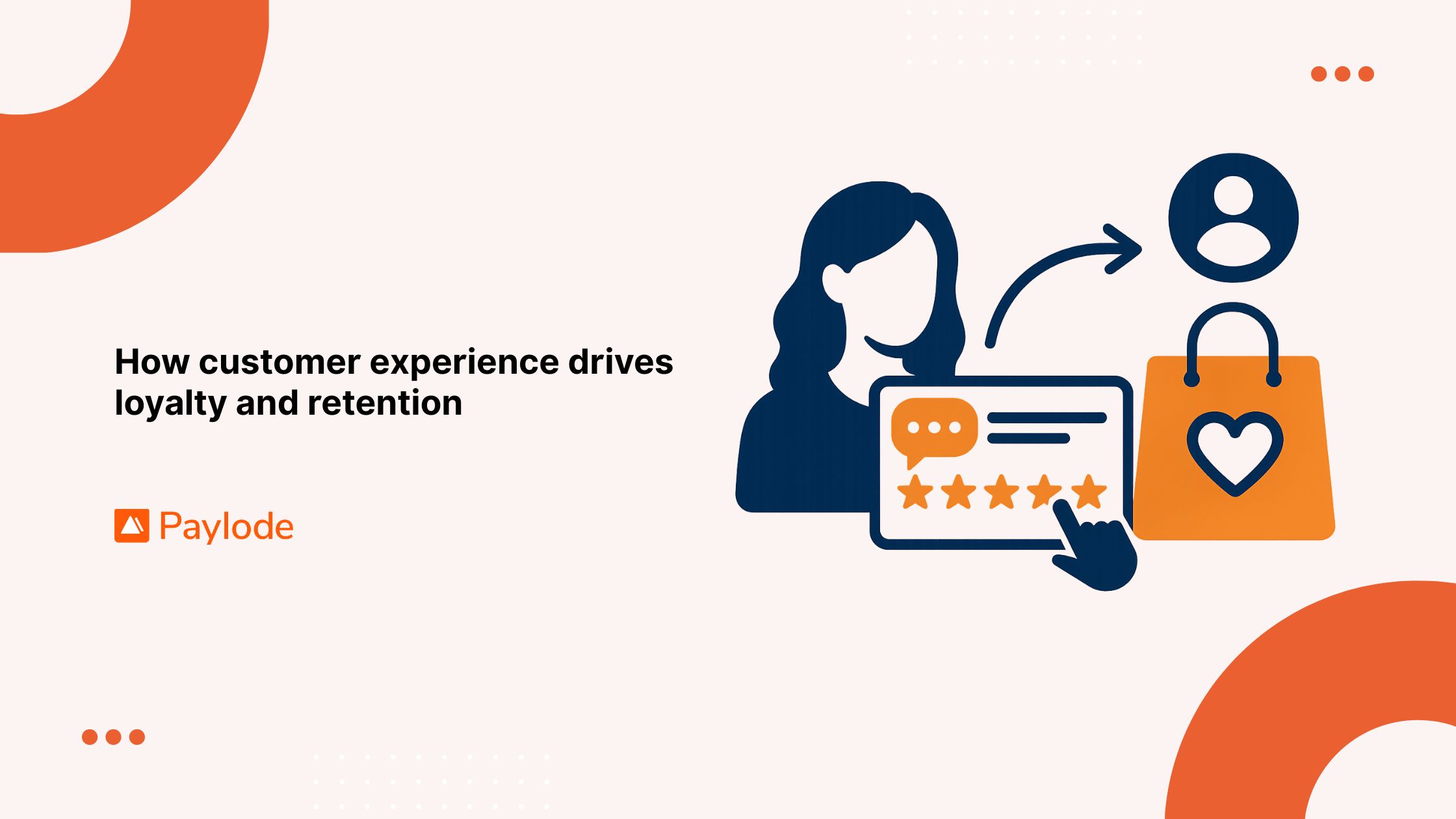Most loyalty programs focus on points, perks, and discounts—but these only scratch the surface of what keeps customers coming back. True retention goes deeper. Emotional loyalty is when customers stay connected to a brand because they feel valued, understood, and aligned with its mission. Unlike transactional loyalty, which can be swayed by a better deal from a competitor, emotional loyalty builds bonds that last.
For industries like telecom, financial services, residential real estate, ISP, and digital health, this is especially critical. Customers often face multiple options but choose to stay when they feel emotionally engaged with a brand. In fact, studies show that emotionally connected customers have a much higher lifetime value than those who engage purely out of convenience.
What is emotional loyalty?
Emotional loyalty is when customers build a personal, lasting connection with a brand that goes beyond transactions. It’s rooted in how the brand makes them feel—valued, understood, and supported.
To understand this better, let’s compare it with the other two forms of loyalty:
- Transactional loyalty: Customers stay because of discounts, cashback, or rewards. This loyalty is shallow—if a competitor offers a better deal, they may switch.
- Behavioral loyalty: Customers repeatedly purchase from a brand out of habit or convenience. It’s stronger than transactional loyalty, but still vulnerable if competitors disrupt that convenience.
- Emotional loyalty: Customers remain loyal because of trust, shared values, and emotional connection. Even if competitors offer better deals, emotionally loyal customers are less likely to leave.

Why does this matter? Emotions are powerful drivers of decision-making. Customers who feel emotionally connected to a brand are:
- 3x more likely to recommend it,
- 2x more likely to purchase again,
- and less price-sensitive, because value is tied to trust and experience rather than cost.
For example, in telecom, customer churn is high due to constant price wars. Yet brands that create emotional loyalty through transparency, reliable service, and rewarding long-term customers see significantly lower churn. Similarly, in financial services, emotional trust is critical—people stay with providers that make them feel secure and respected, not just the ones with the lowest fees.
Why emotional loyalty matters for brands
Emotional loyalty is more than a marketing buzzword—it drives measurable business impact. Customers who feel emotionally invested in a brand are less likely to switch, spend more over time, and actively recommend the brand to others.
Higher customer lifetime value (CLV)
When customers feel connected, they’re not just making repeat purchases—they’re engaging in a long-term relationship. Emotionally loyal customers spend more, purchase more often, and are less sensitive to pricing changes.
Reduced churn and greater advocacy
Unlike transactional loyalty, which is vulnerable to competitor discounts, emotional loyalty creates resilience. Customers who feel valued are less likely to leave, and more likely to advocate through reviews, referrals, and word-of-mouth.
Relevance across industries
- Telecom/ISP: In a competitive market, emotional loyalty makes customers feel cared for, not commoditized. Personalization and transparency directly reduce churn.
- Residential real estate: Tenants want more than housing—they want community. Perks and personalized resident experiences help them feel truly valued.
- Financial services: Emotional loyalty here is rooted in trust. Customers stay loyal to institutions that make them feel safe and respected, even if others offer lower fees.
- Digital health: Patients engage longer when they trust providers. Emotional loyalty leads to better adherence to wellness programs and stronger patient-provider bonds.
Key drivers of emotional loyalty
Emotional loyalty doesn’t happen by accident—it’s built through intentional strategies that strengthen the bond between brand and customer. These are the core drivers:
Trust and transparency
Trust is the foundation of any emotional connection. Brands that are open about policies, pricing, and values build stronger loyalty. For example, telecom and financial service providers who prioritize transparency reduce churn and gain long-term credibility.
Personalization
Customers want to feel recognized as individuals, not transactions. By tailoring offers, recommendations, and perks, brands can deepen emotional engagement. Tools like resident perks and personalized experiences make customers feel truly valued.
Shared values
When a brand’s mission aligns with customer values—whether it’s sustainability, inclusivity, or community support—it creates deeper connections. This alignment transforms customer relationships from purely functional to emotional.
Recognition and appreciation
Acknowledging milestones, rewarding loyalty, and celebrating customer achievements foster emotional connection. With Paylode’s Boost strategy, brands can strengthen lifetime value by ensuring customers feel consistently appreciated.
.jpg)
How to build emotional loyalty through loyalty programs
Emotional loyalty isn’t built by offering the biggest discount—it’s about creating meaningful experiences that strengthen customer bonds. Here’s how brands can evolve their loyalty programs to drive emotional engagement:
Move beyond discounts → create experiences
Traditional loyalty programs that focus on points or discounts risk becoming transactional. Instead, offer unique experiences such as early access to services, exclusive events, or VIP treatment. Experiences create memories, which fuel emotional attachment.
Personalize rewards and perks with data insights
One-size-fits-all rewards rarely spark loyalty. By leveraging customer insights, brands can offer tailored rewards that feel personal and thoughtful. For example, Paylode’s resident perks model shows how personalization increases satisfaction and retention.
Enable seamless omnichannel engagement (digital + in-person)
Customers want consistent recognition across every touchpoint—whether they’re online, in-app, or visiting in person. Integrating digital and offline experiences ensures loyalty feels seamless and always accessible.
Highlight storytelling and brand mission as part of the loyalty journey
Customers connect emotionally with brands that stand for something. By weaving your mission, values, and storytelling into loyalty programs, you make customers feel part of something bigger. This fosters long-term advocacy and retention.
Measuring emotional loyalty
Unlike transactional loyalty, emotional loyalty is less visible but highly measurable if you focus on the right signals. By combining customer feedback with behavioral data, brands can gain a clear view of how connected their customers truly feel.
Customer sentiment surveys (NPS, CSAT + emotional depth)
Surveys such as Net Promoter Score (NPS) and Customer Satisfaction (CSAT) remain important, but they should be expanded to capture emotional depth. Asking how customers feel about your brand provides insights into trust, connection, and advocacy.
Engagement metrics (referrals, community participation, reviews)
Customer actions often speak louder than words. Tracking referrals, online community participation, and customer reviews offers measurable evidence of emotional loyalty. Customers who feel deeply connected are more willing to recommend and engage without being prompted.
Emotional connection index (ECI)
The Emotional Connection Index (ECI) is a research-backed way to quantify emotional loyalty. It measures how strongly customers feel connected across trust, values, and experience. Brands with high ECI scores see significantly higher customer lifetime value (CLV).
How Paylode helps measure emotional loyalty
With Paylode, you can move beyond surface-level metrics. Our platform allows businesses to track not just engagement, but also the impact of personalized perks, resident experiences, and loyalty-boosting strategies on emotional connection. By combining sentiment data with real-time engagement insights, Paylode gives you a clear picture of how emotional loyalty translates into measurable business outcomes.
Examples of emotional loyalty in action
Emotional loyalty looks different across industries, but the underlying principle remains the same: customers stay connected because of how a brand makes them feel. Here are a few examples:
Telecom: Rewarding long-term customers with exclusive experiences
In the telecom industry, where switching providers is common, companies that recognize and reward long-term subscribers stand out. Offering exclusive experiences—such as VIP event access, priority service, or personalized upgrades—helps reduce churn and strengthen emotional bonds.
Financial services: Loyalty perks that reinforce financial security
For banks and financial institutions, emotional loyalty is built on trust and confidence. Providing loyalty perks that reinforce security—like fraud protection rewards, financial health checkups, or personalized investment insights—helps customers feel safe and valued, deepening their loyalty.
Digital health: Apps rewarding consistent engagement with wellness perks
Digital health providers can foster emotional loyalty by rewarding patients for staying engaged. For example, offering wellness perks, discounts on health services, or personalized progress rewards encourages patients to stay committed to their journey, building trust and long-term engagement.
Common mistakes to avoid
While building emotional loyalty can be transformative, many brands unintentionally fall into traps that weaken loyalty instead of strengthening it. Here are the most common pitfalls:
Over-reliance on discounts
Discounts may drive short-term sales, but they rarely build emotional connection. If customers stay only for the lowest price, they’re likely to leave the moment a competitor offers a better deal.
Ignoring emotional triggers in favor of transactional rewards
Many loyalty programs focus solely on points or cashback. While useful, these fail to tap into deeper emotional drivers like recognition, trust, and shared values. Without emotional engagement, programs become interchangeable and forgettable.
One-size-fits-all approach to loyalty programs
Customers expect personalized experiences. Offering the same rewards to every customer makes programs feel generic. Tailoring perks, communications, and experiences based on individual preferences is essential for building lasting emotional loyalty.
Conclusion: Why emotional loyalty is the future of retention
Transactional rewards may win attention, but only emotional loyalty wins long-term commitment. Customers who feel understood, valued, and connected will not only stay longer but also advocate for your brand, driving growth that no discount can match.
By focusing on trust, personalization, shared values, and recognition, brands across telecom, financial services, residential real estate, ISP, and digital health can unlock stronger relationships and higher lifetime value.
At Paylode, we help companies design loyalty programs that go beyond transactions—creating personalized perks, resident experiences, and Boost strategies that drive emotional connection and measurable business outcomes.
Ready to build lasting emotional loyalty with your customers?
Book a demo with Paylode today and discover how we help brands turn connections into lifetime loyalty.
FAQs on emotional loyalty
What is emotional loyalty?
Emotional loyalty is when customers stay connected to a brand because of trust, shared values, and positive experiences, rather than just discounts or convenience.
How is emotional loyalty different from behavioral loyalty?
Behavioral loyalty is based on habit or convenience—like buying from the nearest store. Emotional loyalty is deeper; it’s built on feelings of trust, recognition, and belonging, making customers far less likely to switch.
Why is emotional loyalty important in customer retention?
Emotional loyalty increases customer lifetime value (CLV), reduces churn, and drives advocacy. Customers who feel emotionally connected are more likely to recommend a brand and engage over the long term.
How can brands measure emotional loyalty?
Emotional loyalty can be measured through sentiment surveys (NPS, CSAT), engagement metrics (referrals, reviews, community activity), and advanced metrics like the Emotional Connection Index (ECI). Tools like Paylode also help track how personalized perks and engagement strategies impact loyalty.
What industries benefit the most from emotional loyalty programs?
Industries like telecom, ISP, residential real estate, financial services, and digital health benefit significantly. In competitive sectors, emotional loyalty helps brands stand out by creating trust, recognition, and long-term relationships.



